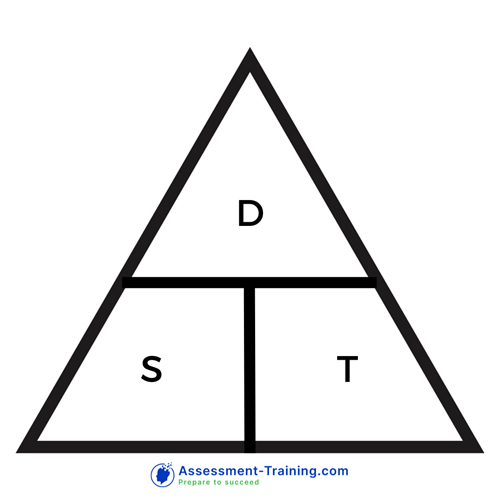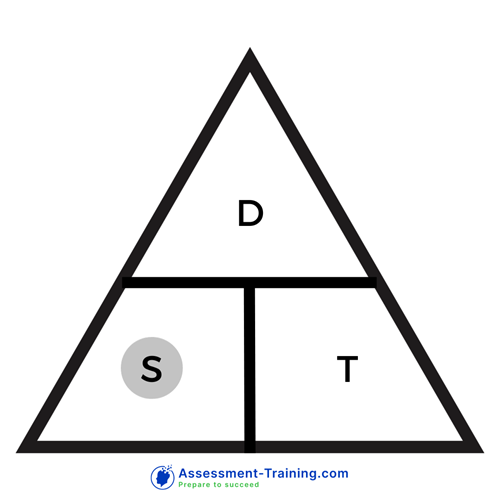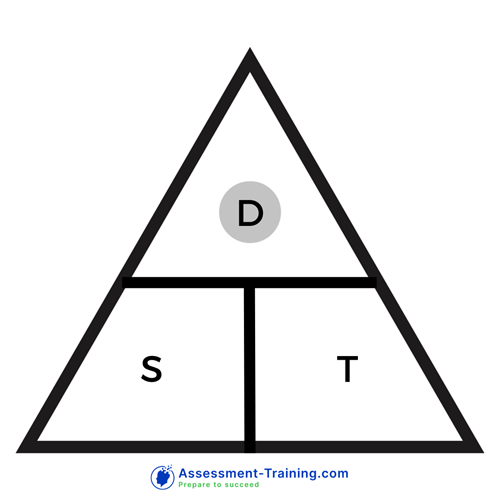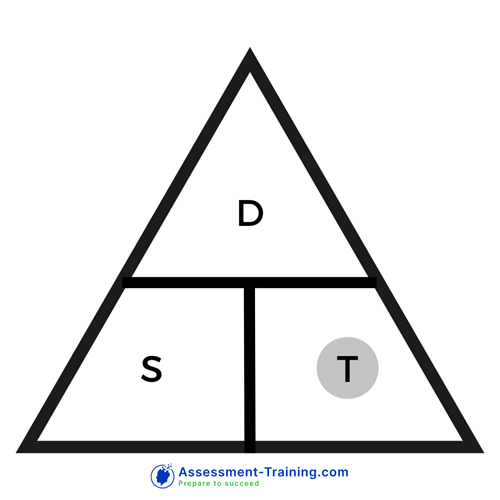- Online Videotraining (58 Videos + Questions + Answers + Extended Workbook)
- Suitable for CEB/Gartner (SHL), Watson Glaser, Kenexa, Cubiks, Talent Q, TalentLens (Pearson), RANRA and more
- 206 Aptitude Tests
Mastering the Speed Distance & Time Triangle Guide
Mastering the Speed Distance Time Triangle: A Comprehensive Guide
In any occupation that deals with motion – from logistics to defense – the essence of understanding the relationship between speed, distance, and time is undeniably paramount. For candidates hoping to make strides in such industries, it's not uncommon to be evaluated on this concept. This isn't just about arithmetic; it's about applying logic to practical scenarios.

The triangular key to speed, distance, and time
The act of computing speed, distance, or time is tantamount to decoding a triangular puzzle. Central to this is the "speed distance time triangle". At its core, it's a mnemonic representation, helping you mentally picture the relationships.
Think of it this way:
- Speed = Distance ÷ Time
- Time = Distance ÷ Speed
- Distance = Speed × Time
The triangle, in essence, makes these equations tangible. With distance at its pinnacle and speed and time forming its base, it offers a graphical hint: multiply when dealing with the base and divide when separating them.
Deciphering speed with the triangle's aid

Revel in the triangle's simplicity. Envision blanking out 'speed' from it. What remains is 'distance' atop 'time'. Hence, to derive speed:
Take this scenario:
Suppose a traveler covers 180 miles in a span of 3 hours. The formula unfolds as:
180 miles ÷ 3 hours = 60 miles/hour.
Voila! The traveler's pace stands at 60mph.
Unlocking distance: The triangle's roadmap

For distance, it's about merging the triangle's base. Multiply speed with time.
Illustrating this:
Consider a motorist driving at 100mph for 4 hours. Simply,
100mph × 4 hours = 400 miles.
They've covered 400 miles!
Unraveling time via the triangle

Determine time by segregating speed from distance. This becomes clear with an example:
If a journey of 50 miles was undertaken at 5mph, the time calculates to:
50 miles ÷ 5mph = 10 hours.
It took them a total of 10 hours!
Practical dilemmas: Speed, distance, and time
Contemplate these:
1. Andy's truck covers 400 miles in 8 hours while Harry does 200 miles in 4.5 hours. Who's speedier?
Answer: Andy at 50mph, outpaces Harry's 44.44mph.
2. Tessa dashes a 5km race in 40 minutes. Maintaining this, how long for an 8km race?
Answer: Speed being 7.5kph, she'd need roughly 1 hour 4 minutes for 8km.
3. Hannah cycles 10mph for 2 hours, then 20mph for 1.5 hours. Her total distance?
Answer: Combining 20 miles and 30 miles, she completes 50 miles.
Enhancing proficiency in the speed distance time triangle
Two pivotal steps to mastery exist:
- Embrace the triangle. Understand its intricacies and have its variations at your fingertips.
- Refine arithmetic prowess. Sometimes, problems interweave the triangle with other math areas.
Dive into practice sessions like those on Assessment-Training.com. Repeated exposure ensures you're not just accurate but swift, reinforcing confidence in real-test scenarios.
In the vein of Assessment-Training.com, proficiency in understanding the "speed distance time triangle" is not merely about number crunching. It's a blend of application, intuition, and practice. Navigate the realms of motion with ease, ensuring you're always a step ahead in your professional pursuits.
All Aptitude Tests Package + Job Application Video Training
- 197 Aptitude Tests
- 3146 Aptitude Test Questions
- One-off Payment
All Aptitude Tests Package + Job Application Video Training
- Online Videotraining (58 Videos + Questions + Answers + Extended Workbook)
- Suitable for CEB/Gartner (SHL), Watson Glaser, Kenexa, Cubiks, Talent Q, TalentLens (Pearson), RANRA and more
- 206 Aptitude Tests
- 197 Aptitude Tests
- 3146 Aptitude Test Questions
- One-off Payment